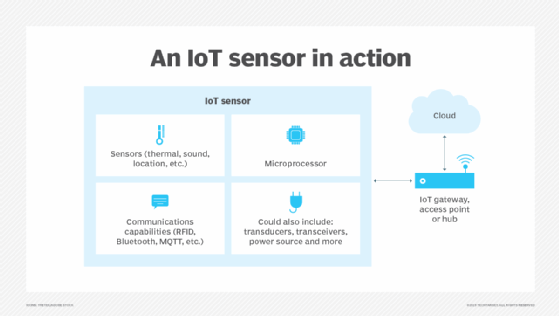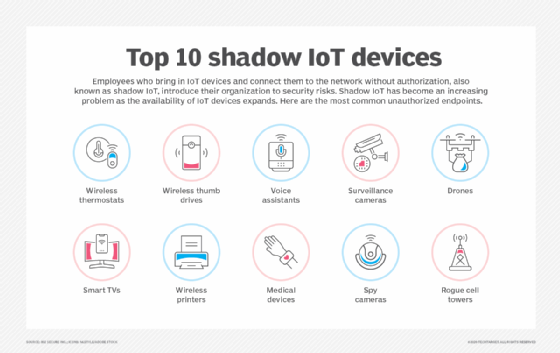What is a smart sensor and how does it work?
A smart sensor is a device that takes input from the physical environment and uses built-in compute resources to perform predefined functions when it detects specific input. It can also process data before passing it on. Smart sensors enable more accurate and automated collection of environmental data with less erroneous noise among the accurately recorded […]
Read MoreWhat is internet of things device management (IoT device management)?
Internet of things device management (IoT device management) refers to the processes and tools used to remotely register, configure, provision, maintain and monitor connected devices from a centralized platform. IoT device management tools enable organizations to have better control of their mobile devices, while also ensuring that their devices are kept working, secure and up […]
Read MoreExplore the relationship between IoT governance and privacy
Privacy protection is one of the most critical elements within IoT governance. With IoT devices continuously collecting vast amounts of personal and sensitive data, privacy considerations must be embedded in an organization’s governance structures rather than treated as an afterthought. “Privacy first” should be the message to all who engage in business or personal […]
Read MoreTop 12 IoT applications and examples in business
The world now has twice as many connected devices as humans, and the number of IoT-enabled endpoints is expected to climb even more exponentially in the years ahead. In a May 2025 report, German data collection and visualization firm Statista put the number of IoT devices worldwide at 19.8 billion in 2025 and predicted it […]
Read MoreWhat is an IoT gateway?
An IoT gateway is a physical device or software program that serves as the connection point between the cloud and internet of things devices, such as controllers, sensors and smart devices. IoT is used in enterprises and industries and can be found in consumer products. IoT gateways act as a central hub, connecting IoT devices […]
Read More11 IoT security challenges and how to overcome them
From smartwatches to smart streetlights, smart home devices to smart manufacturing, the internet of things has revolutionized how people and organizations operate, improving efficiencies and optimizing processes. With these benefits, however, comes a major challenge: IoT increases the number and types of security risks businesses and consumers face. Any device that connects to the […]
Read MoreWhat is internet of things privacy (IoT privacy)?
Internet of things privacy, or IoT privacy, is the special consideration required to protect individuals’ information from exposure in the IoT environment. These steps are necessary because, in an IoT setting, almost any physical or logical entity or object can be given a unique identifier and the ability to communicate autonomously over the internet or […]
Read MoreWhat is IoT (internet of things)?
The internet of things, or IoT, is a network of interrelated devices that connect and exchange data with other IoT devices and the cloud. IoT devices are typically embedded with technology, such as sensors and software, and can include mechanical and digital machines and consumer objects. These devices encompass everything from everyday household items to […]
Read MoreWhat is the internet of medical things (IoMT)?
The internet of medical things (IoMT) is the collection of medical devices and applications that connect to healthcare IT systems through online computer networks. IoMT improves patient monitoring and care processes while also increasing operational efficiency and reducing costs. In practice, IoMT in healthcare can include the following: Using remote patient monitoring (RPM) for people […]
Read More10 top design principles of IoT
With IoT, everyday items become smart allies, making life and work easier and more connected. And it’s not just the devices themselves doing that. It’s a combination of IoT devices and the applications and systems that connect to them. Good IoT design aims to create smart systems that are easy to use, work well, align […]
Read More










